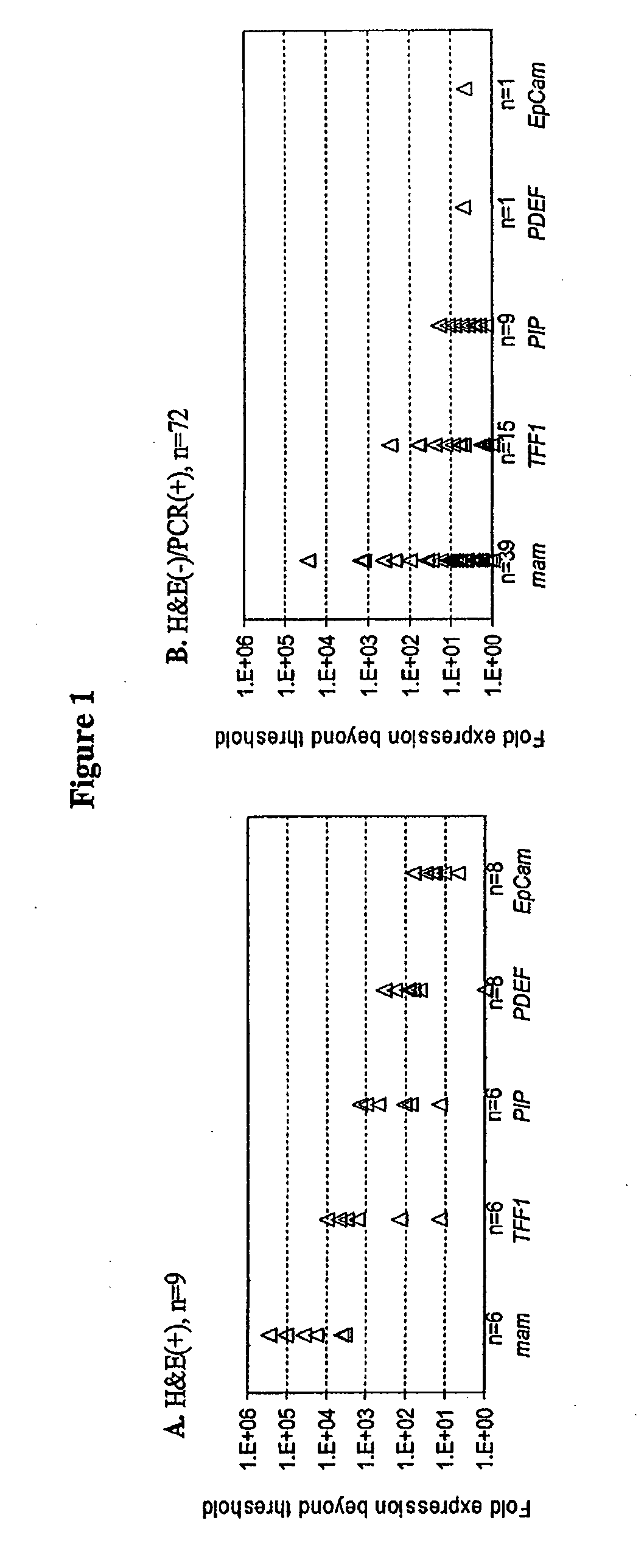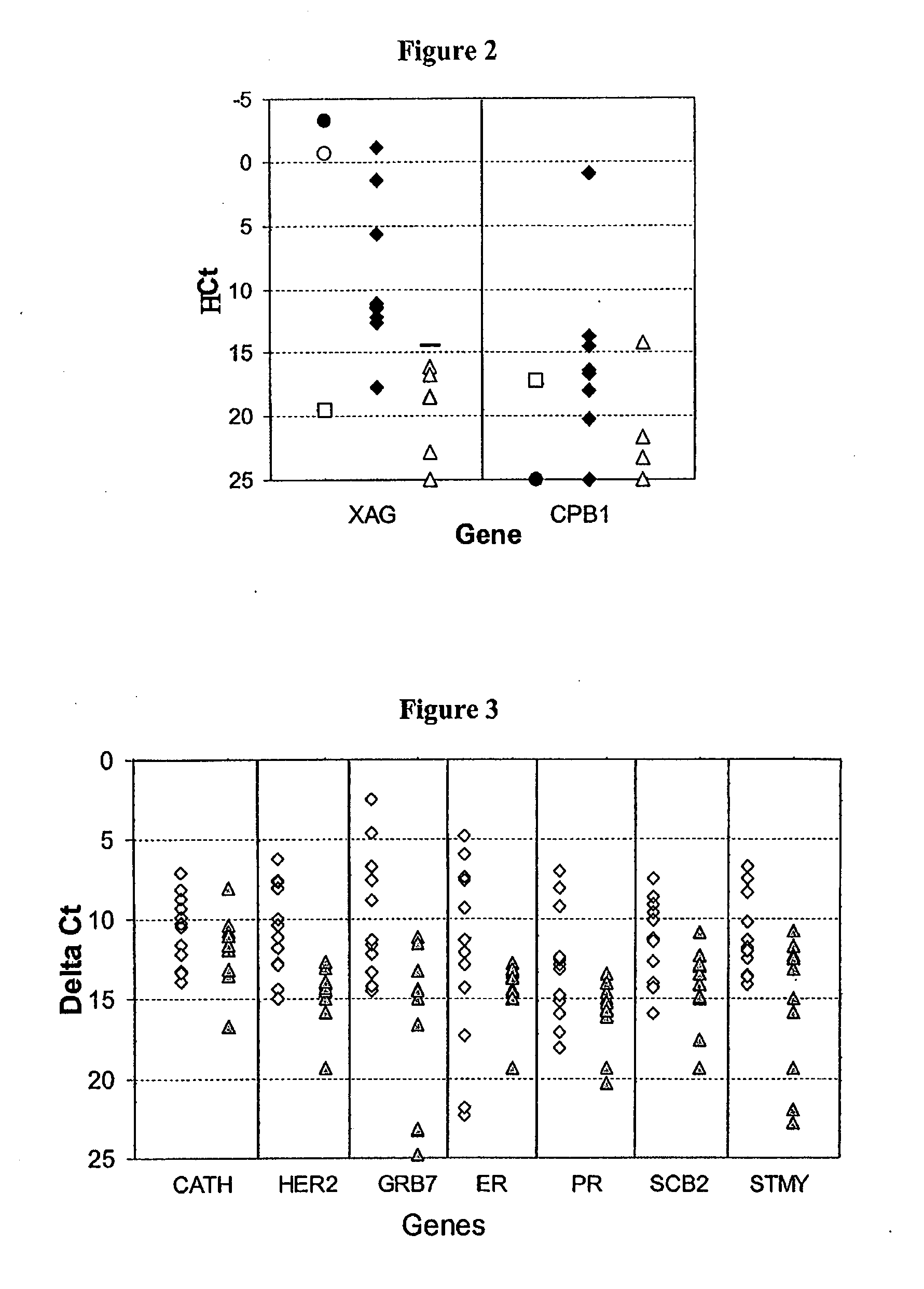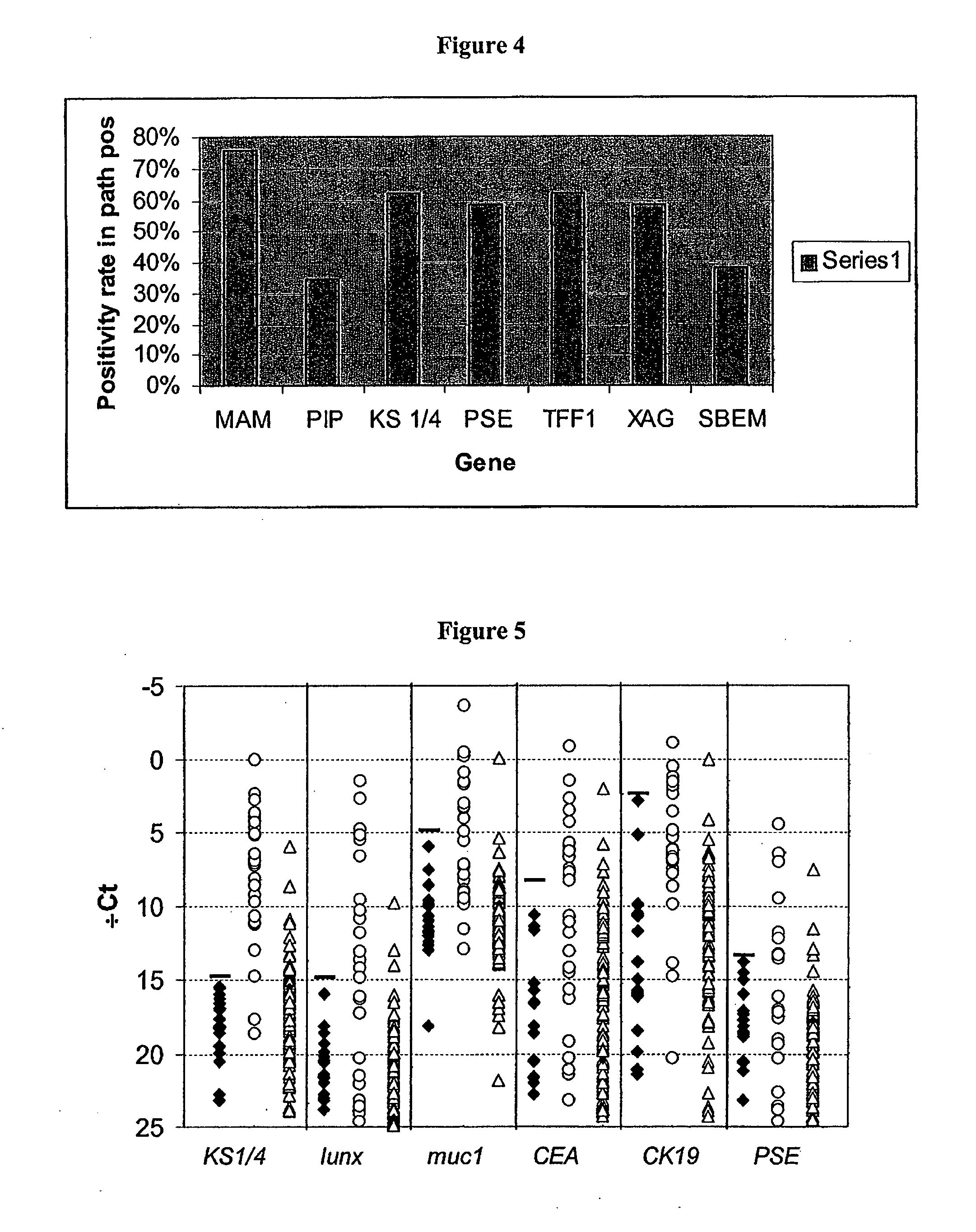Methods for the detection and treatment of cancer
a cancer and cancer technology, applied in the field of molecular biology, can solve the problems of inability to determine which early-stage resected patients to be resected, inability to add postoperative adjuvant therapy to combat occult metastatic disease, and inability to reliably and easily determine which early-stage resected patients to treat, etc., and achieve the effect of increasing the likelihood of respons
- Summary
- Abstract
- Description
- Claims
- Application Information
AI Technical Summary
Benefits of technology
Problems solved by technology
Method used
Image
Examples
example 1
Identification of Markers for Detection of Micrometastatic Disease
[0100] Rationale: The purposes of this study were to determine why some molecular markers are better than others in previous studies for detection of micrometastatic disease and to use this information to search for additional markers.
[0101] Design: Frequency distributions of gene expression values previously obtained as described above (Gillanders et al. (2004) Ann. Surg. 239:828-840) were generated and analyzed using a MATLAB 6 programming environment. Next, a microarray analysis was performed using a metastatic axillary lymph node in which mam was overexpressed at a level 5.3×107-fold higher than the mean expression in normal lymph nodes. RNA from the metastatic lymph node was diluted into a pool of normal lymph node RNA at ratios of 1:50, 1:2,500 and 1:125,000. For all of these conditions, expression values were obtained for a total of 22,283 gene transcripts spotted on an Affymetrix U133A array. Finally, the mi...
example 2
Identification of Genes Predictive for Responsivity to Hormonal Therapy
[0109] Genes that are predictive for response to tamoxifen therapy have been previously identified in the GH / NSABP study (Paik et al. (2004) N. Engl. J. Med. 351:2817-2826). The utility of these genes in the lymph node setting is not known and largely depends upon the degree to which these genes are overexpressed compared to normal lymph node. This study is designed to identify a gene expression signature profile that correlates with favorable outcome using FFPE SLN from ER+ / node+, tamoxifen-treated patients, including those with recurrent disease and those that have been disease-free at least 5 years post-surgery. Disease-free and recurrent patient groups are matched for tumor size / stage at diagnosis. SLN are subjected to real-time RT-PCR analysis using a carefully selected 14-gene marker panel that includes TFF1, AGR2, five genes that are diagnostic for detection of metastatic disease, as well as six prognosti...
example 3
Identification of AGR2 as a Highly Sensitive Marker to Detect Metastatic Non-Small Cell Lung Cancer (NSCLC)
[0135] The present study was to determine whether informative genes of high diagnostic value could be identified using a microarray approach. It was reasoned that genes of high diagnostic accuracy would be highly expressed in at least several NSCLC cell lines with respect to normal lymph node.
[0136] Design: RNA was prepared from lung cancer cell lines CRL5809 (bronchioalveolar carcinoma), CRL5876 (adenocarcinoma), A549 (adenocarcinoma), and HTB177 (large cell carcinoma). Gene expression values from each cell line were obtained for a total of 22,283 transcripts spotted on an Affymetrix U133A array. As negative control, expression values of normal lymph node RNA were also determined. Potential diagnostic genes were selected based on the following criteria: 1) absence of expression in normal lymph node; and 2) detectable expression in at least 2 lung cancer cell lines. Genes wer...
PUM
| Property | Measurement | Unit |
|---|---|---|
| Fraction | aaaaa | aaaaa |
| Fraction | aaaaa | aaaaa |
| Fraction | aaaaa | aaaaa |
Abstract
Description
Claims
Application Information
 Login to View More
Login to View More - R&D
- Intellectual Property
- Life Sciences
- Materials
- Tech Scout
- Unparalleled Data Quality
- Higher Quality Content
- 60% Fewer Hallucinations
Browse by: Latest US Patents, China's latest patents, Technical Efficacy Thesaurus, Application Domain, Technology Topic, Popular Technical Reports.
© 2025 PatSnap. All rights reserved.Legal|Privacy policy|Modern Slavery Act Transparency Statement|Sitemap|About US| Contact US: help@patsnap.com



